Much of the work of yoga happens off the mat. After all, the mat practice is, in part, about preparing yourself to handle life outside of the studio. I’ve found that reading books about yoga can enhance my asana practice while also shedding light on life matters seemingly unrelated to yoga (e.g. how I feel about my purpose in life, how I conduct myself around others).
Whatever your style of yoga may be, I have a hunch that at least one of these books will appeal to you. From memoir to science writing to detailed asana instructions, this list has a little bit of everything. Be warned—if you dive into one book, you may just want to read another and another. You’ll also find that the fact that some of these books are in dialogue with each other (indirectly and sometimes directly) illustrates that no yoga text–or yoga practice, for that matter–ever stands alone.

1. Light on Yoga by B.K.S. Iyengar
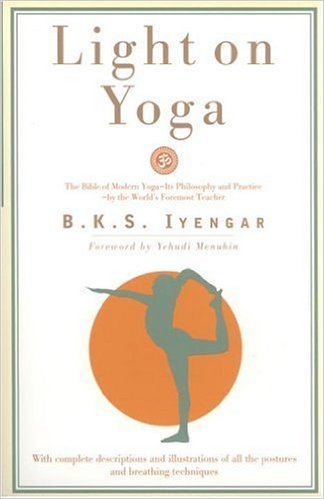
This classic text belongs in the library of any yogi, especially those interested in getting in touch with the roots of modern yoga. Aside from being the founder of Iyengar style of yoga, Iyengar is credited by many with popularizing yoga around the world. His teaching initially focused on improving flexibility and stamina. After a scooter accident dislocated his spine, his style of teaching evolved to include props The use of yoga props now allows yogis everywhere to accommodate areas of physical inflexibility and even certain disabilities while practicing yoga safely.
Light on Yoga is a seminal text in the world of modern yoga, and even if you’re devoted to another style of yoga, this manual can still serve you. The beginning of the text covers yoga’s spiritual dimension and discusses the importance of character, thoughts, and life path. The bulk of the text, however, includes illustrations and explanations of nearly every pose imaginable, making it a handy resource for anyone interested in teaching yoga or designing their own yoga routines.
2. The Science of Yoga: The Risks and Rewards by William J. Broad
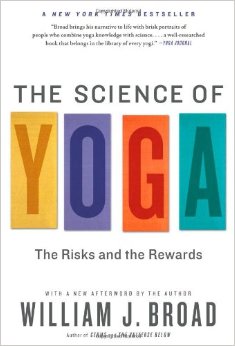
If you’re a lover of yoga and science writing, then you’ll find that Broad delivers in The Science of Yoga. A senior writer at The New York Times, Broad is a long-time yogi with a penchant for asking the hard questions. The text explains studies on the benefits of yoga, including its ability to boost creativity and enhance your sex life. The text also details findings regarding the serious risks of yoga, including stroke and paralysis, both of which are associated with poses causing strain to the neck (like headstand). Broad even takes on Iyengar, calling attention to Iyengar’s advice to put the majority of one’s weight on the head in headstand. As you can imagine, the fact that Broad challenges some of modern yoga’s “truths” led to an outcry in the yoga community, but Broad feels that causing a bit of a ruckus was worth it. Thanks to his digging, contemporary yoga is a little bit safer and self-taught yogis can be far more informed than ever before.
3. Yoga for Life: A Journey to Inner Peace and Freedom by Colleen Saidman Yee
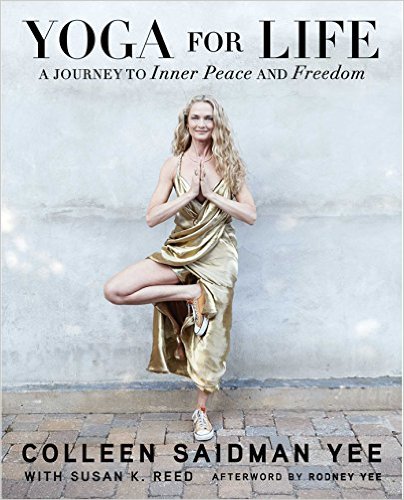
Former model Colleen Saidman Yee traces the major eras of her life, including working as a model, overcoming her drug habit, becoming a mother, finding peace through yoga, and meeting her life partner (famous yogi Rodney Yee). Each chapter ends with a yoga sequence that explores a particular theme like forgiveness, fear, love, service, or women. Even if we haven’t experienced the same ups and downs as Yee, it’s easy to relate to her down-to-earth narrative. Her honest confrontation of life’s demons is inspiring and reminds us that no one is perfect–and all of us can benefit from the special sanctuary that is yoga.
4. The Shambhala Encyclopedia of Yoga by Georg Feuerstein, Ph.D
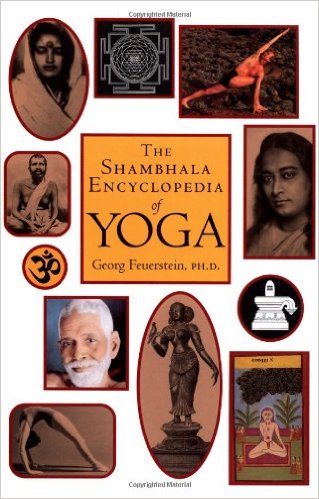
Suited for the intellectual yogi, The Shambhala Encyclopedia of Yoga includes 2,000 entries including yoga terminology, asanas, Hindu gods, and famous yoga teachers. Some entries include illustrations. The encyclopedia also offers Sanskrit translations of English words we may associate with yoga’s spiritual healing and enlightenment like guilt (kilbisha) and duality (dvaita). If you’re interested in learning more about yoga’s roots, it’s certainly a joy to flip through this book.
The author Georg Feuerstein was a German scholar specializing in Indian studies. His interest in the Indian culture fueled the 30+ books he authored on mysticism, yoga, Tantra, and Hinduism.
5. Yoga Anatomy by Leslie Kaminoff and Amy Matthews
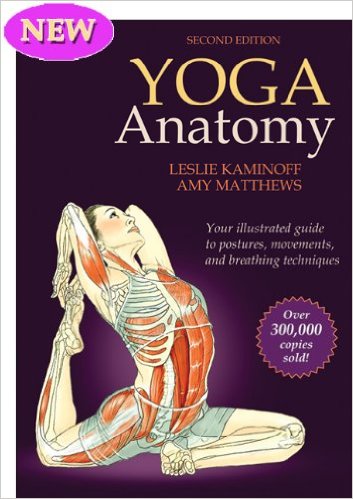
With full-color anatomical illustrations and in-depth information about asanas, muscles, joints, bones, Yoga Anatomy is a must for anyone interested in teaching yoga or any yogi interested in deepening her knowledge of yoga’s impact on the body. If this book looks a little too textbook-y, don’t fear. Although it’s filled with technical information, it manages to reflect a core belief of yoga–that everything is connected. Yoga Anatomy illustrates how spine, breathing, and body position all work together and influence each other.
What are your favorite yoga books?
Also in Peaceful Practice: How to Set and Intention for Your Practice
Does Yoga Breathing Oxygenate the Body?
How to Create a Home Yoga Space
Get more like this–sign up for our newsletter for exclusive inspirational content!
Photos: Kaboompics, Amazon




